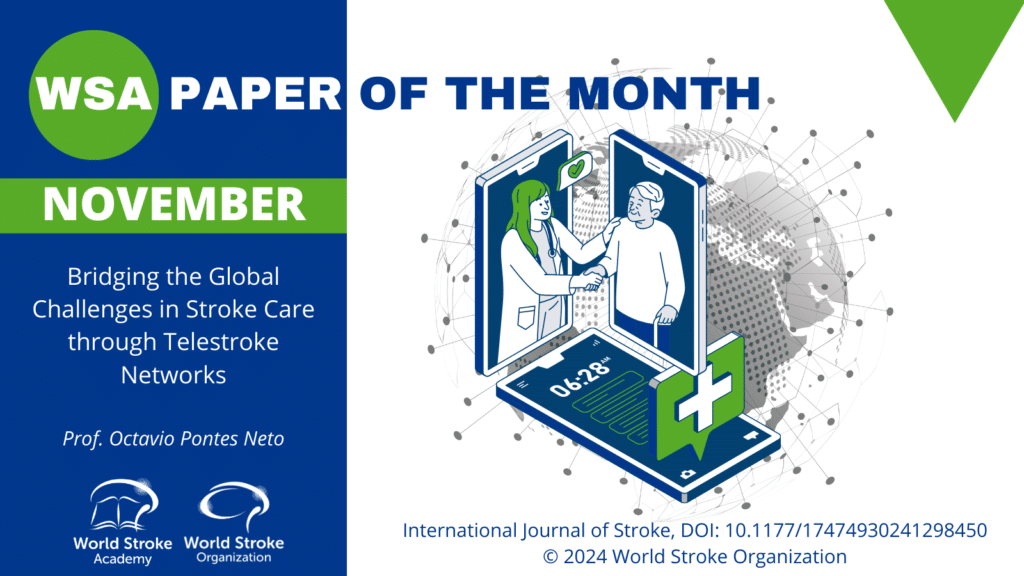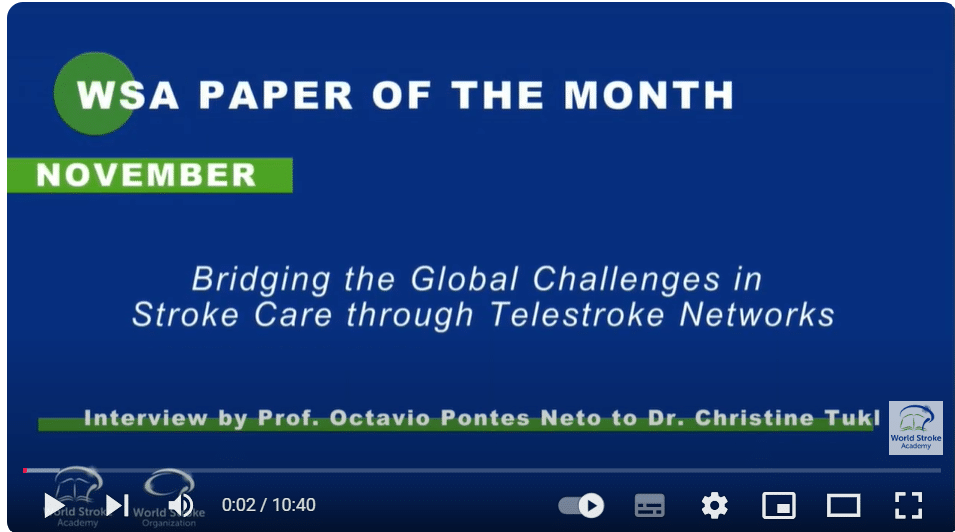The Paper of The Month – November
18 Nov 2024Bridging the Global Challenges in Stroke Care through Telestroke Networks
Bridging the Global Challenges in Stroke Care through Telestroke Networks
By Prof. Octavio Marques Pontes-Neto, MD, PHD – WSA Editor-in-Chief
This article is a commentary on the following: Tunkl C, Agarwal A, Ramage E, et al. Telemedicine networks for acute stroke: An analysis of global coverage, gaps, and opportunities. International Journal of Stroke. 2024;0(0). doi:10.1177/17474930241298450
Commentary:
Stroke remains a leading cause of disability and death worldwide, yet access to timely and expert treatment remains unequal across regions. The manuscript by Tunkl et al., featured in this issue of the International Journal of Stroke, provides a global analysis of telestroke networks, shedding light on their distribution, diversity, and impact. Their findings offer critical insights into how telemedicine can transform acute stroke care and reduce disparities.
Telestroke networks enable remote evaluation and management of stroke patients by connecting underserved areas with expert neurologists. This innovative approach has proven effective in facilitating decisions about timely interventions, such as thrombolysis and mechanical thrombectomy, significantly improving patient outcomes. However, as Tunkl et al. reveal, the global distribution of these networks is far from equitable. Of the 254 identified telestroke networks, nearly 70% are located in high-income countries (HICs), leaving low- and middle-income countries (LMICs) with minimal coverage. Alarmingly, 58 countries report no evidence of telestroke services.
The study was based on four-tiered approach to comprehensively identify telestroke networks, collecting information frrom national stroke experts, stroke societies, and international stroke authorities. A carefully designed questionnaire was distributed to the leaders of all identified networks to assess these networks’ structures, processes, and outcomes. The results highlights a notable disparity in the operational characteristics of these networks. While many HIC networks have robust infrastructure, including real-time video and imaging technology, networks in LMICs often rely on more basic tools, such as commercial messaging platforms. Despite these challenges, an encouraging trend emerges: most new telestroke networks in the past three years have been established in LMICs, signaling a pivotal shift toward expanding access in underserved regions.
Another critical aspect highlighted by the authors is the inconsistency in quality assurance across networks. Key performance indicators, such as door-to-needle times and recanalization rates, are often underreported. This variability underscores the urgent need for standardized, resource-appropriate quality monitoring practices tailored to diverse settings. To address these challenges, the authors advocate for a tiered framework for telestroke implementation—categorized as basic, essential, and advanced—aligned with the World Stroke Organization roadmap. This adaptable model offers a structured pathway for developing telestroke networks in resource-limited settings while maintaining core quality standards.
This study represents an important step forward in understanding the global landscape of telestroke care. However, it also highlights the significant work that remains to be done. The barriers identified—technical limitations, financial constraints, and inadequate connectivity— need to be covered by coordinated global efforts and investment. Moreover, it is essential to organize collaborations between countries with established networks and those without can accelerate the equitable expansion of telestroke services.
The findings of Tunkl et al. should serve as a call to action for policymakers, healthcare providers, and global health organizations. As telestroke networks continue to evolve, it is imperative to prioritize equitable access and ensure that all patients, regardless of geographic location, have access to life-saving stroke care. By addressing the gaps and embracing the opportunities presented in this study, we can take a significant step to improve global health equity in stroke care.
References:
Video Interview:



